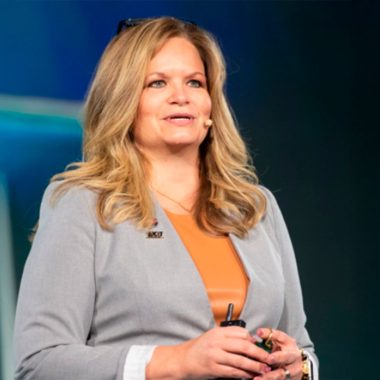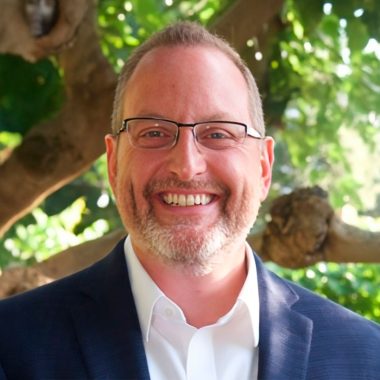Ask T’Juana Albert what derails global compliance programs and she starts with mindset. Many leaders still treat compliance as a back office chore rather than a commercial capability. “It’s more often seen like a back office functionality versus a commercialized way to build trust,” says Albert. That mindset reduces compliance to checklists instead of building durable systems. Compliance should be designed into how the company operates, then measured and improved like any other core process. “There are ways to embed the compliance principles into your business,” she says, noting that client expectations in digital advertising have only grown.
Albert’s credibility comes from breadth as much as depth. At GumGum she has synchronized M&A integration, IT & Security, internal audit, procurement and special projects while shaping international legal structures, privacy programs and technical documentation. Colleagues call her a Swiss-army knife for good reason. She uses that versatility to translate regulatory requirements into workflows that sales, engineering and finance can live with.
Start With Failure Points, Then Unify Governance
Albert’s design playbook begins with a frank assessment of where things break. “One of them is around fragmented regional policies,” she explains. Country teams write rules that make sense locally, but the patches do not scale. The first move is to unify governance so it expands cleanly with new markets and acquisitions. That shift matters most when growth is fast. GumGum was operating in three major markets before acquisitions broadened the footprint, which made a single governance spine nonnegotiable.
She also urges leaders to replace reactive habits with preventive discipline. Security and privacy incidents often catalyze investment, yet waiting for a breach is a costly teacher. “The opportunity becomes having a proactive compliance because again, that builds your trust with your clients and your partners.” Boards should stop labeling compliance a cost center and start treating it as “a strategic risk to trust conversion.” Or, as Albert frames it, “Board-level alignment is crucial: Leaders must shift from compliance as liability mitigation to compliance as value protection and enterprise enabler.”
Build Once, Scale Everywhere
Albert’s GDPR project is still remembered as a defining success inside the company. “We only had seven months to get compliant. We had not even started,” she recalls. Alone, and with no prior knowledge of GDPR, she threw herself into the challenge. She pushed forward by taking the toughest requirements and make them the standard everywhere. That choice gave the company direction and transformed a daunting challenge into a breakthrough success.
One clear example came during GDPR implementation: the incident response timelines. If one regime required notification within 24 hours and another allowed 72, Albert set 24 as the global standard. “We just built a framework that complied within 24 hours globally.” The approach eliminates debate, compresses ambiguity for teams and reduces the risk of local misinterpretation. When a new law tightens a threshold, the framework ratchets up everywhere. That is how compliance infrastructure stays current without constant reinvention. “A global compliance framework isn’t about control, it’s about enabling confidence, scale, and speed.”
Turn Trust Into Revenue
Albert has also reframed what proof points matter to customers. “So much emphasis was being put on accreditations with like MRC,” she says, “when actually a lot of our clients care more that we are SOC 2 compliant.” Independent audits signal maturity and shorten procurement cycles. “We are SOC 2 compliant and we’ve been vetted by EY,” she says, which gives sellers credible language and gives buyers confidence that controls are real, not theoretical. Treat those attestations as enablement assets. Put them in the hands of account teams, train them to speak to scope and exceptions, and map them to customer risk concerns. From Albert’s rich experience, that is how a control environment becomes a sales narrative rooted in facts.
Prepare for AI With the Four Cs and a Fast-Moving Legal Team
“If companies are not dealing with AI now, they’re already behind. Don’t wait for government regulations to tell you how to build a framework around it because they’re always behind.” Her AI foundation starts with protections, identifying what data must be safeguarded, how ownership is defined, and which contractual guardrails need to be in place before any new tools are adopted. “We focus on our protections first,” she says, which includes owning rights to derived data and preventing vendors from using company data for model training. Those principles then flow into procurement, data architecture and vendor management.
To keep the organization aligned, Albert coaches leaders on the four Cs: clarity on policy; consistency in execution; culture that values compliance; and continuity so programs survive reorgs and budget cycles. One practical accelerant is legal. “You need to get your legal on board,” she says. Legal often slows decisions because AI risk is new and complex. The fix is education and direction from the top. Fund training, set response SLAs, and make it clear that legal’s job is to enable responsible speed. “If they don’t stay up to speed, they are getting woefully behind.”
Her story shows that compliance can be a way to build trust, win clients, and keep companies moving confidently through uncertainty. By leaning into tough requirements, pushing for alignment at the top, and keeping an eye on how technology is reshaping risk, Albert has shown that compliance is less about slowing down and more about giving businesses the freedom to grow responsibly.
Connect with T’Juana Albert on LinkedIn for more insights.








